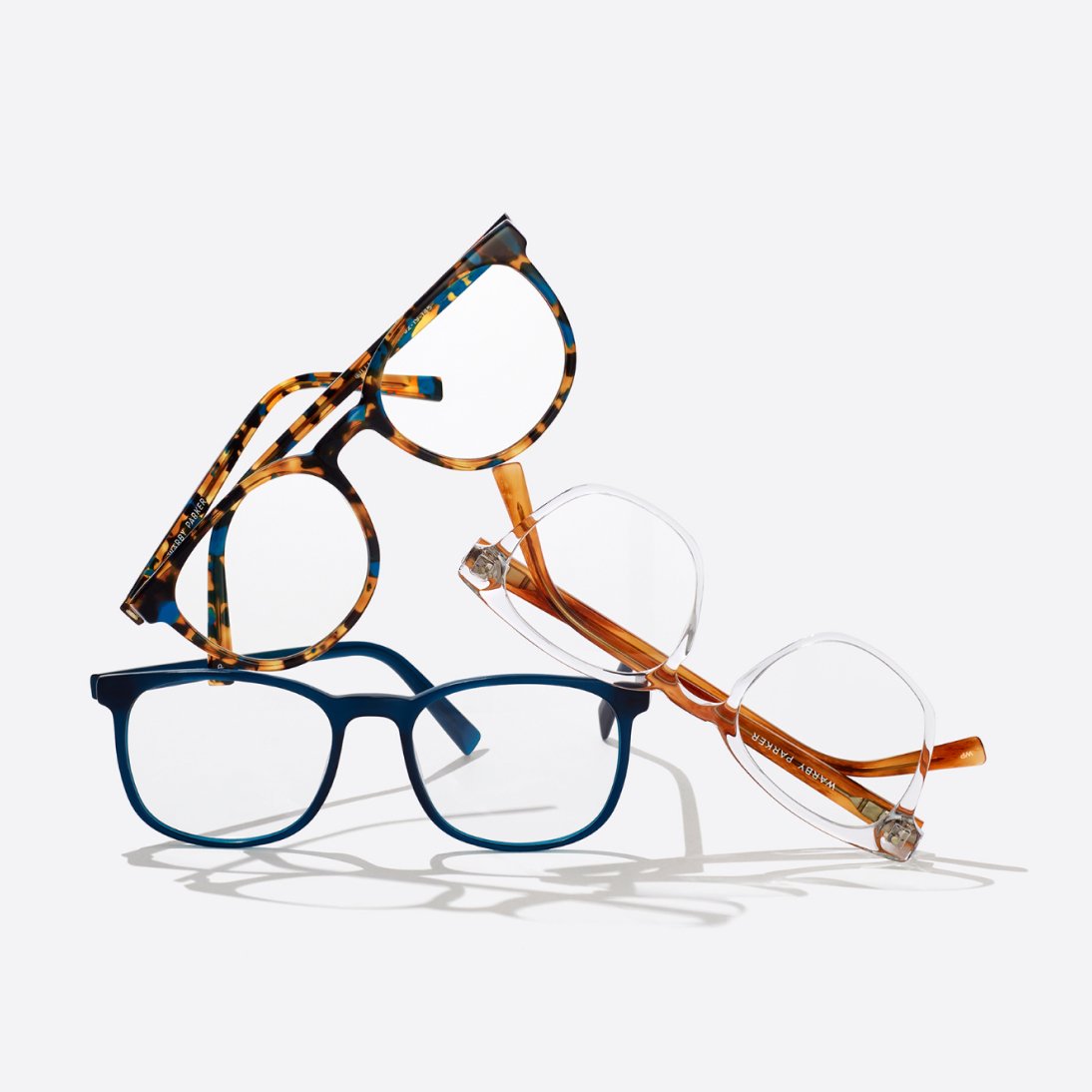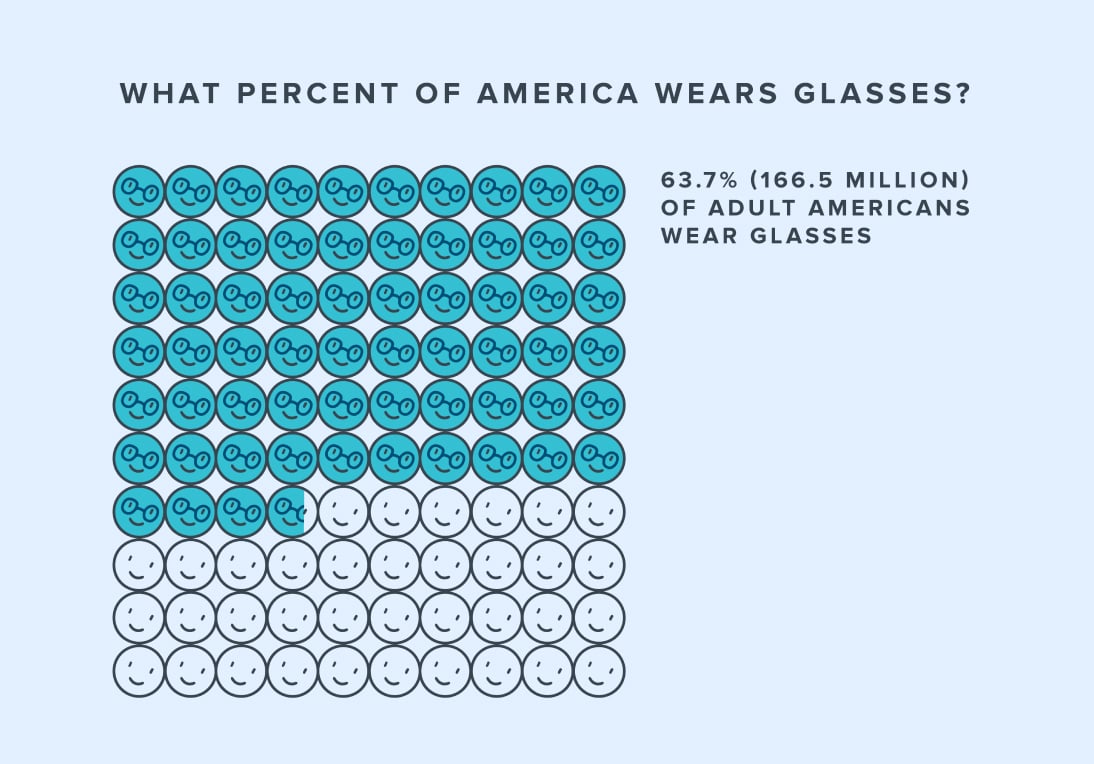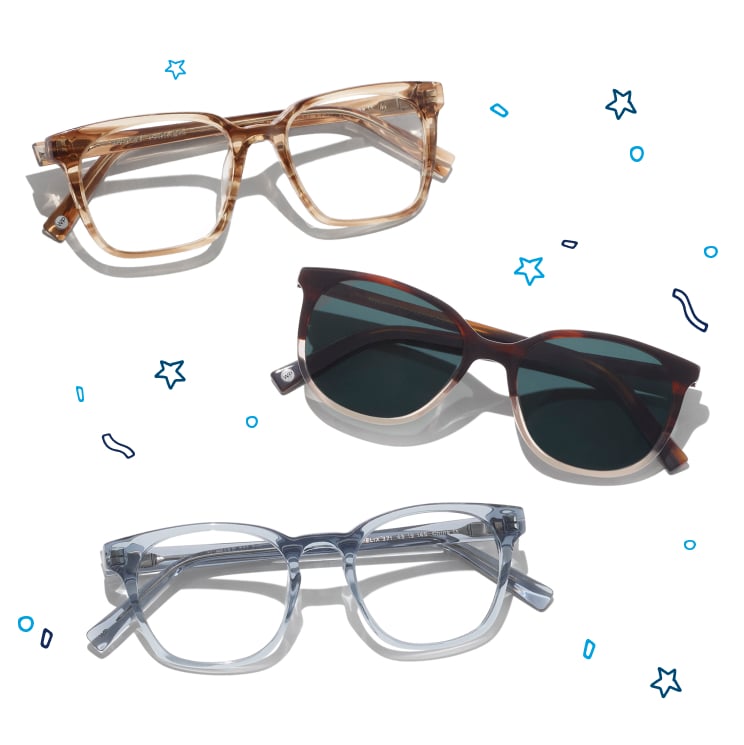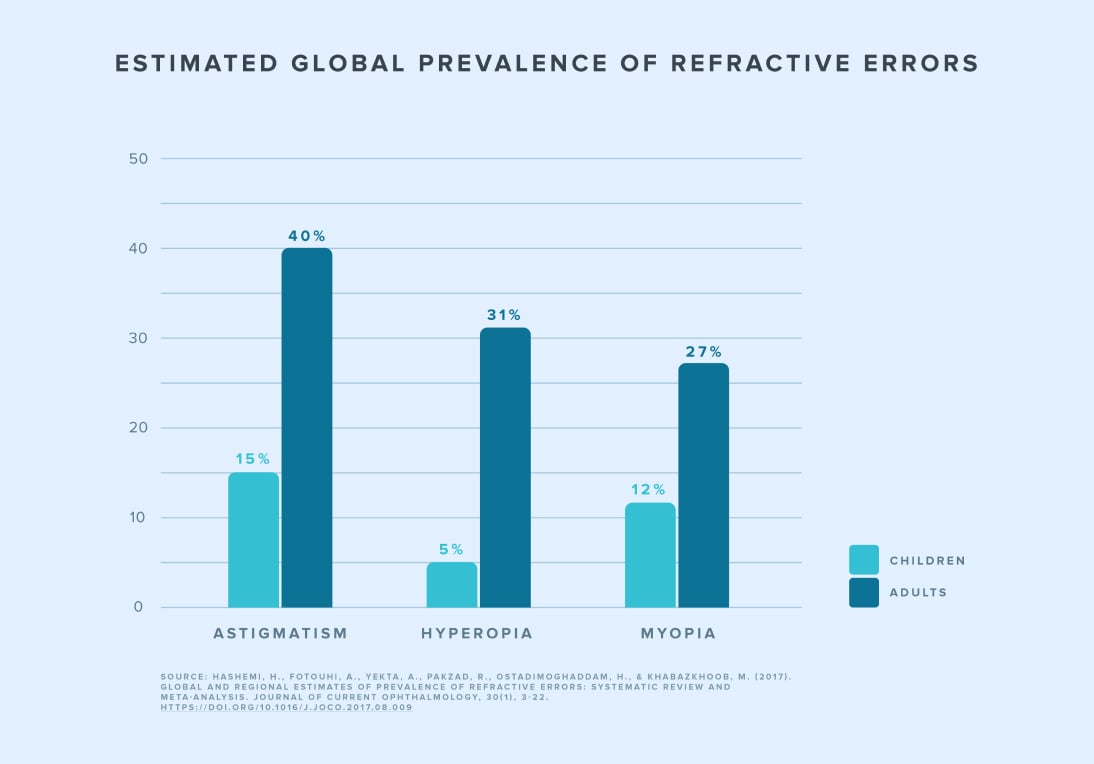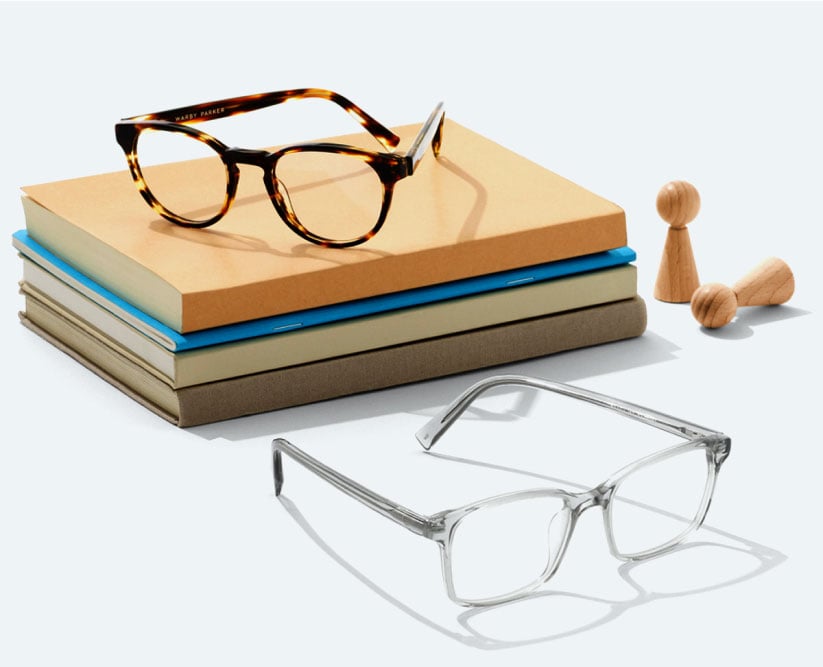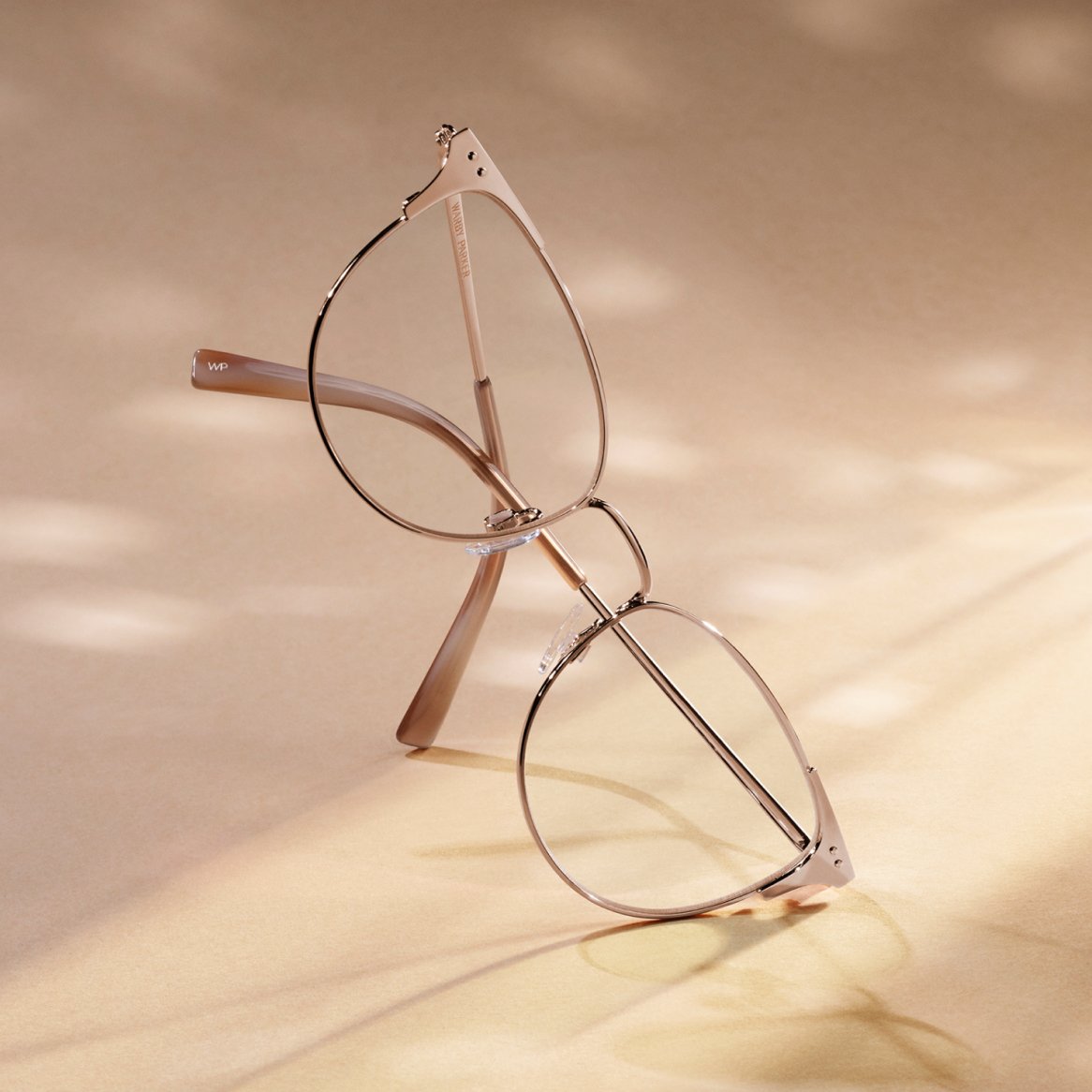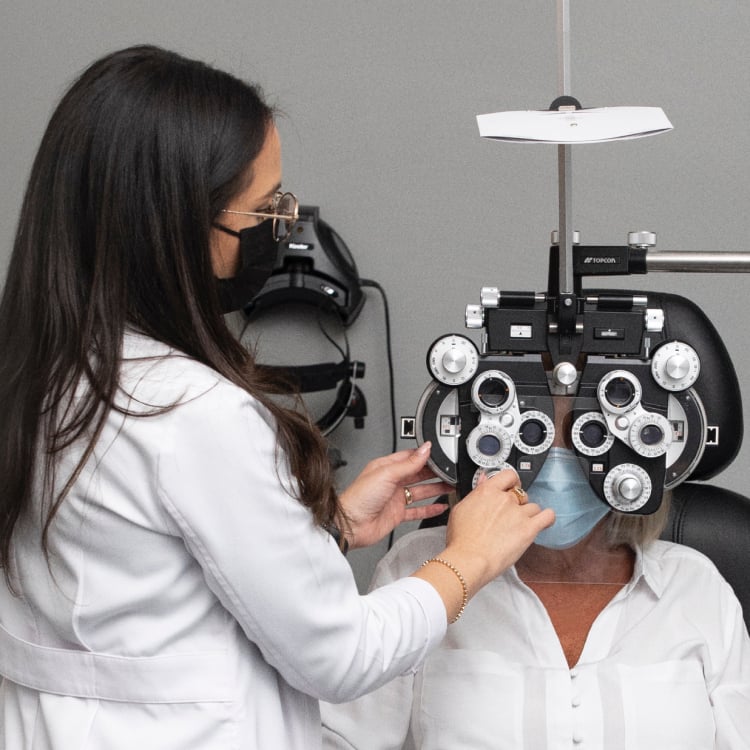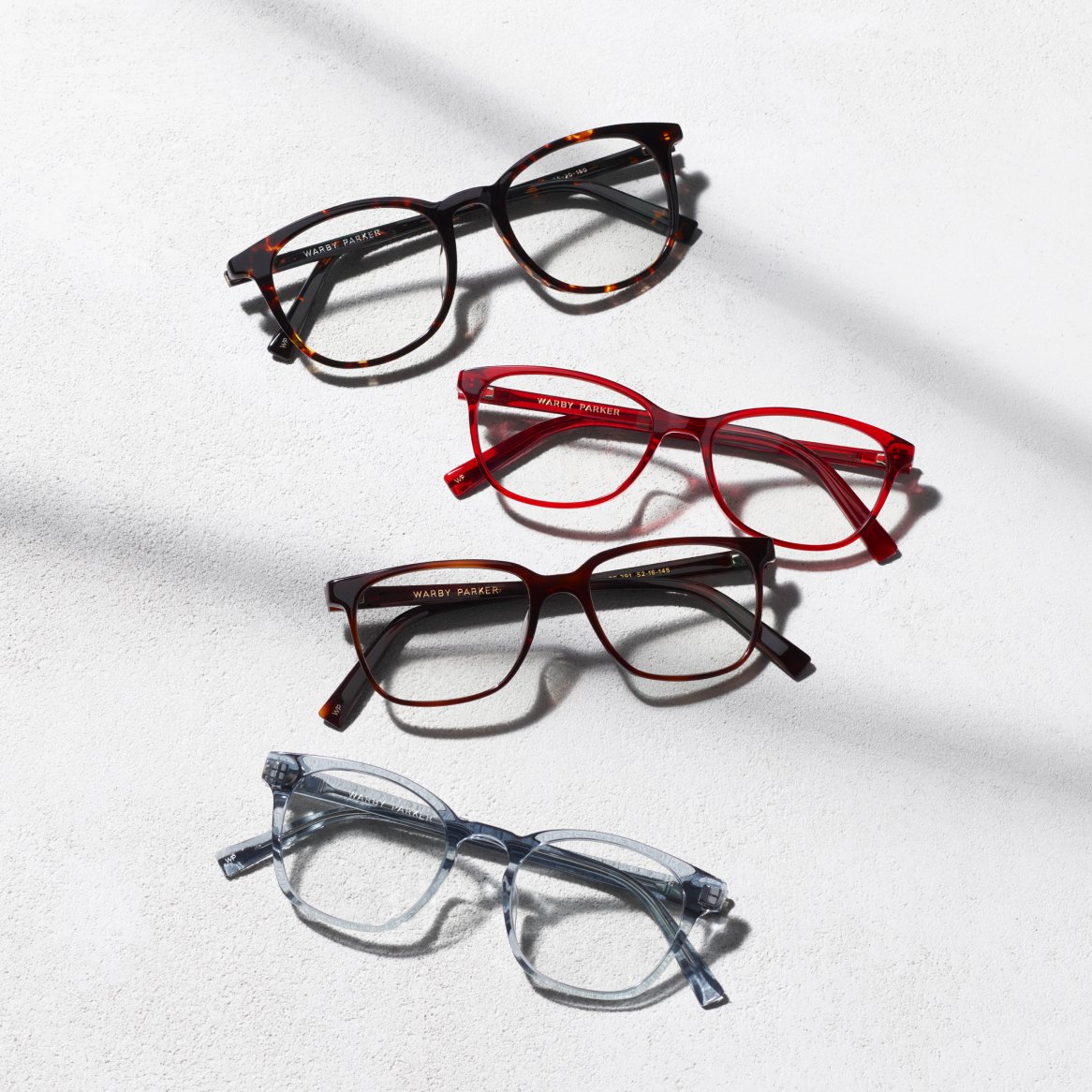If you wear eyeglasses, you may have found yourself wondering at some point how many other people out there wear glasses like you. Is it more common than you think?
The truth is that we can’t nail down exact numbers, especially on a global scale. There simply aren’t a lot of large-scale studies or data, and the numbers that are out there vary from source to source. With that said, we’ve poured all the reliable info we could find into this one handy article to help quell your curiosity.
What Percentage of People Wear Glasses?
As we’ve mentioned, quantifying the number of global glasses wearers is tricky due to a lack of international data. Let’s look at the percentages of glasses wearers using a smaller sample size: the United States.
What Percent of America Wears Glasses?
Percentage of Glasses Wearers by Age
A National Health Interview Survey from 2019 reported that 25.3% of American children between 2–17 years of age wore either glasses or contacts. For both boys and girls, the percentage of vision-correction wearers increased with age.
On the other end of the spectrum, a 2018 study showed that a whopping 92.4% of Medicare beneficiaries aged 65 years or older reported that they use glasses.
How Many People Need Glasses?
Keep in mind that asking how many people wear glasses is completely different than asking how many people need glasses. Just because someone needs glasses doesn’t mean they’re going to wear them or have access to corrective eyewear.
According to the World Health Organization, at least 2.2 billion people have problems with near or distance vision. And, for about half of those people (at least one billion), vision impairment could have been prevented or hasn’t been treated yet.
Why Do People Need Glasses?
We’ve established that many people need glasses. So, let’s examine some of the reasons why people need glasses. We can break this down into two main issues: refractive errors and other eye conditions.
Refractive Errors
A refractive error occurs when your eye shape or structure prevents light from focusing on the retina (the back of the eye) the way it’s supposed to. This can result in blurry vision.
- Astigmatism: People with astigmatism have an irregular curve to their cornea that bends light abnormally. This prevents light from focusing on the retina. According to a 2017 study in the Journal of Current Ophthalmology, about 14% of children and 40% of adults have astigmatism globally.
- Hyperopia (farsightedness): For people with hyperopia, their eyes focus light on a point past the retina. This makes close-up objects and text appear blurry while far-away objects are clear. That same 2017 study shows that about 5% of children and 31% of adults in the world have hyperopia.
- Myopia (nearsightedness): For people with myopia, their eyes focus light on a point in front of the retina. This makes distant objects look out of focus while close objects look clear. Again, per the Journal of Current Ophthalmology study, about 12% of children and 27% of adults around the world are nearsighted.
- Presbyopia: Presbyopia is similar to hyperopia in that it makes close-up objects and text appear blurry. But unlike hyperopia, this doesn’t happen because of the shape of the eye or curvature of the cornea. It occurs naturally with aging as the lens loses its flexibility and functionality. In a study, researchers estimated roughly 1.8 billion people in the world had presbyopia in 2015.
Other Eye Conditions
Of course, it isn’t just refractive errors that cause issues with vision. Some examples of other eye conditions that may sometimes be treated with corrective lenses include:
- Amblyopia: Commonly known as “lazy eye,” amblyopia usually occurs as a vision impairment in one eye, but rarely it affects both. Amblyopia happens when something causes the brain to ignore signals from one eye. That “something” could be refractive errors or other conditions. Depending on the cause, an eye doctor might prescribe glasses. The estimated global prevalence of amblyopia is about 1.5%.
- Eye strain: Even if your vision isn’t impaired by refractive errors, eye strain could still affect your vision. In some cases, your eye doctor might recommend glasses to treat eye strain, such as anti-fatigue lenses, reading glasses, or even prism glasses.
- Strabismus: Sometimes referred to as “crossed eyes,” strabismus is a misalignment of the eyes. One eye may be turned inward, outward, upward, or downward. It’s estimated that about 2% of people globally have some form of strabismus.
Don’t Become a Statistic. Protect Those Peepers!
It’s evident in the numbers: Refractive errors and eye conditions are prevalent around the world. And many of these conditions can be solved with corrective eyewear. This is why it’s so important to keep up with regular eye exams to protect your eyes and safeguard your vision. And if you need an optometrist, we happen to know a few. 😉

